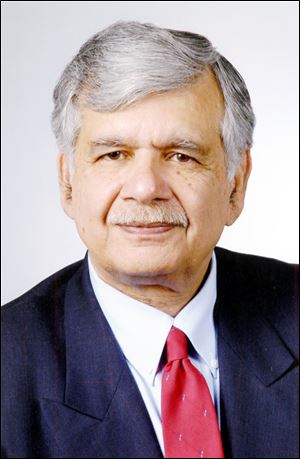
Film a reminder of problems women still face
3/3/2014
Hussain
A short film by the French filmmaker Eleonore Pourriat has gone viral on the Internet. Oppressed Minority depicts a world that is dominated by women. The reversal of gender roles creates some hilarious comedy, but also underscores the built-in biases men have about women.
In the film, women thrive. They go jogging topless, relieve themselves at will in public, and feel free to harass men sexually.
A man is sexually assaulted by young girls in an alley. When he reports the incident to police, the officer in charge — a woman — blames him for provoking the attack. Never mind that he’s cut and bruised.
The movie oversimplifies a rather complex issue, but the thrust of the film is not difficult to grasp. We live in a man’s world.
Despite much progress in the past 100 years, women continue to lag behind men in almost every aspect of life. They have to struggle with sexual assaults, wage disparity, and unequal job opportunities.
Perhaps the most heinous crime against women is rape. In a male-dominated society, the crime does not receive the attention it should. Statistics tell the story.
The U.S. Centers for Disease Control and Prevention estimates that 1.3 million women are sexually assaulted in the United States every year. Most rapes are never reported.
On college campuses, one in four young women is raped during her time in higher education. Ninety-seven percent of rapists are never incarcerated.
Enforcement has been a problem. In Detroit, more than 11,000 rape kits await testing. In Houston, the police force has 6,000 to 7,000 rape kits that were never tested.
Why go through the trouble of using a kit on a rape victim and then not testing the kit? You can only conclude that the police in those cities and elsewhere don’t take the crime seriously.
In 2012, Todd Akin, a Republican U.S. Senate candidate from Missouri, said in an interview that in case of “a legitimate rape, the female body has ways to try to shut that whole thing down.” Other men who think that way are serving in Congress and on federal courts.
Then there is unequal pay for equal work. In 1963, President John Kennedy signed the landmark Equal Pay Act, which was meant to narrow and eventually eliminate the pay gap between men and women.
More than 50 years later, women get 77 cents for every dollar a man gets for the same work. The numbers are worse for African-American women, and worse still for Latino women.
This disparity exists in every state and in the 50 largest metropolitan areas of the country. At the present rate of addressing the disparity, it will take another 45 years to achieve equality in pay.
Another dichotomy is in job opportunities. More women are studying and graduating from colleges and universities than ever before, but only 24 percent of full professorships are held by women.
Women constitute 17 percent of members of Congress and 30 percent of college presidents. A dismal 4.6 percent of them are chief executive officers of Fortune 500 companies. There are six women governors. The Obama Administration’s cabinet is two-thirds male.
It has been argued that women lag behind in leadership positions because of their child-bearing and child-rearing roles. However, biology cannot be blamed for lack of progress. It has more to do with a male-dominated culture that consciously or unconsciously downplays discrimination against women.
In 1972, Congress passed a landmark amendment to the Constitution that would have guaranteed equal rights to women. The Equal Rights Amendment was sent to state legislatures for ratification. It fell short.
Oppressed Minority is a good reminder of the need for all men, including this columnist, to end discrimination against women.
The film is available on YouTube.
Dr. S. Amjad Hussain is a retired Toledo surgeon whose column appears every other week in The Blade.
Contact him at: aghaji@bex.net